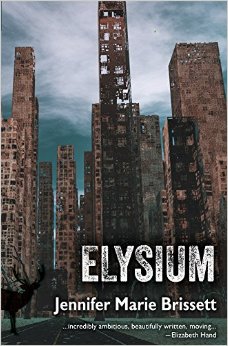|
Jan Morris, Hav, Faber & Faber, 2006. I came into Hav by chance. I lost myself in its maze for two weeks, walking its streets, never wanting to leave. I had to, of course, other books were waiting. But Hav will probably one of my favourite encounters of the year. We are in the 1980s, and Jan Morris, a travel writer, arrives in Hav, a peculiar city, set on a promontary on the Western side of the Mediterranean Sea. She'll encounter local figures, bring us with her in the Medina, we will hear the trumpet player at dawn and witness the Roof Race. She returns for a coda in the noughties. Hav has changed. Morris had left in the 80s as a military intervention was happening. The city is now transformed. She'll meet again old friends, each with a different take on what happened, on what the city has become. First of all, don't expect a traditional plot and traditional characters. Hav is presented as a travel book, to the point that some people, when it was first published in the 80s thought that Hav was an actual city and tried to book a holiday there! On the other hand, despite the absence of a traditional plot and characters, this is probably one of the most hypnotic, fascinating, unputdownable books I've ever read. One of the reasons the setting. I'm Mediterranean, and, honestly, I can count on one hand the number of non-Med writers who are able, according to me, to accurately describe the Med cultures and mores. Morris is one of them. It was home as I knew it as a kid in the 80s, in all its complicated glory: the incredibly mixed history, the ancient feuds that are still alive, the old, rich, foreigners who live in the city and outside of it, the mixed cultures and languages, the often impending war and conquest. This is also probably what will make Hav so fascinating for non-Med readers: you have truly the feeling of being there. You can smell the food, hear the sound of waves in the harbour and the shouts of everyone, feel the heat. But Hav isn't only that, it's also a shiny literary object. I'm pretty sure there must be plenty of theses out there who have studied it in a much more detailed and brilliant way than I ever could. But this is an amazing strength of Hav: it's not something you can't get, whatever your degree or not. Hav is a maze, literally, as we find out walking the streets, but also in how people describe it, and of course, the maze is its emblem. To Hav and not to hold. And even when you reach the second part, Hav of the Myrmidons, the maze remains: the history is unknowable, not because there's too many legends but because people will never talk openly about it; the anarchic, mixed architecture has been replaced in a very authoritarian way, but is still maze like. And so it becomes a palimpsest. (And yes, I'm not writing a thesis, so I'll stop there!) The more literary inclined of you will quite simply savour each and every page of Hav. It is not to say that if you're not into the more literary specfic books, you should pass on it. Because it is so alive that you are drawn into it. When I said there were no characters, I was exaggerating. There's one, Jan Morris herself. The problem with autofiction is that you never really know where to draw the line between the character and the actual writer, but Morris is such a charming, funny, intelligent and sassy woman to travel with. After reading Hav, you feel like inviting her to the pub to ask her more stories from her time in Hav. She brings the secondary characters into her sphere, gives them life in a few lines. And you mourn for everything that has been lost in the second part of the book if you took the time to walk the streets with Morris back in the 80s. Finally, this is the ultimate world building. Forget The Silmarillion! Hav reigns in the specfic shelves of world building books. It's not only the landscape, which is described so beautifully, it is also how Morris weaves actual history and historical figures into Hav's history, and some remain legends, local stories not really true, but it's a good story still! Is it specfic? The foreword is by Ursula Le Guin, so you don't really need me to argue that it is. But if Le Guin's word isn't enough for you (Really? You'd dare?), yes, it is. It is an imaginary city, which is very much an allegory, yet true, saying something about our world, as it was in the 80s, as it is nowadays. It is fantasy (some may even argue it is science-fiction) and the genre is broad enough nowadays that we don't need to balk at the fact that there'll be no magic and no wizard leading you on a quest. Or maybe this is who Morris is actually, and you'll end up lost, not in the Moria, but delightfully, in Hav's medina, trying to unravel an unknowable city. As a conclusion, I'd only say that if I'm lucky enough to meet Ms Morris one day, I'll probably kneel and end up sobbing that she wrote one of the most amazing books I've ever read. A thousand thanks to @wa7trel on Twitter who told me of Hav! If you've liked Hav, you may also like
Comments are closed.
|
All reviews are spoiler free unless explicitly stated otherwise.
I only review stories I have liked even if my opinion may be nuanced. It doesn't apply for the "Novels published before 1978" series of blog posts. Comments are closed, having neither time nor the inclination to moderate them. |
WHAT IS THE MIDDLE SHELF?
The middle shelf is a science-fiction and fantasy books reviewS blog, bringing you diverse and great stories .
PLEASE SUPPORT AUTHORS.
IF YOU LIKE IT, BUY IT. |
ON THE MIDDLE SHELF
|
KEEP IN TOUCH WITH THE MIDDLE SHELF
|






 RSS Feed
RSS Feed
